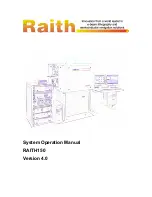
8
8.
Pipetting techniques
Two basic pipetting techniques, forward and reverse pipetting, are
associated with
m
LINE pipettors.
Forward pipetting
is the most
common used pipetting technique. The technique employs the blow-
out function ensuring complete delivery of the liquid.
Reverse
pipetting
is recommended for highly viscous, biological or foaming
liquids, or very small volumes of liquid. A selected volume plus an
excess is aspirated into the tip. The delivery is done without blow-out,
and, thus, the excess volume remains in the tip. The reverse technique
also facilitates the
repeated delivery
of the same volume.
8.1. Forward pipetting
(Fig. 8)
1.
Fit the tip onto the pipettor tip cone.
2.
Press the operating button to the first stop.
3.
Place the tip just under the surface of the liquid (2-3 mm) and
smoothly release the operating button up to the starting position.
Wait one second. Carefully withdraw the tip from the liquid,
touching against the edge of the container to remove excess from
the outside of the tip.
4.
Dispense the liquid by pressing the operating button to the first
stop. After a short delay press the operating button to the second
stop. This action will empty the tip.
Fig. 8.
0
1
2
8.2. Reverse pipetting
(Fig. 9)
1.
Fit the tip onto the pipettor tip cone.
2.
Press the operating button all the way to the second stop.
3.
Place the tip just under the surface of the liquid (2–3 mm) and
smoothly release the operating button up to the starting position.
4.
Withdraw the tip from the liquid touching against the edge of the
container to remove excess.
5.
Press the operating button smoothly to the first stop to deliver the
present volume. Hold the operating button at the first stop. The
liquid that remains in the tip should not be included in the delivery.
6.
Discard the remaining liquid by pressing the operating button to
the second stop.
Fig. 9.
0
1
2













































